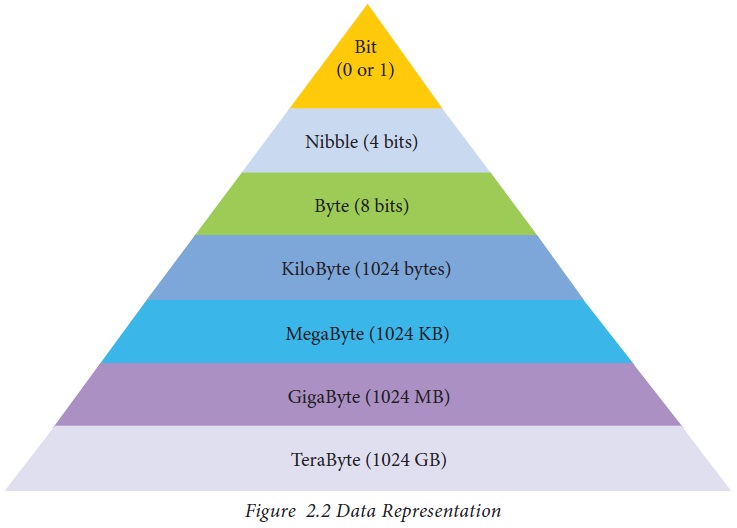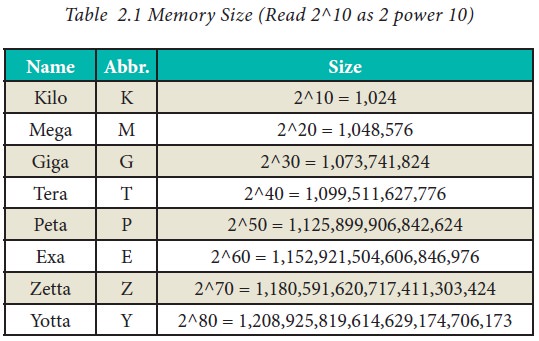Number Systems - Data Representations | 11th Computer Science : Chapter 2 : Number Systems
Chapter: 11th Computer Science : Chapter 2 : Number Systems
Data Representations
Data Representations
Computer handles data in the form
of ‘0’(Zero) and ‘1’ (One). Any kind of data like number, alphabet, special
character should be converted to ‘0’ or ‘1’ which can be understood by the
Computer. ‘0’ and ‘1’ that the Computer can understand is called Machine language. ‘0’ or ‘1’ are called
‘Binary Digits’(BIT). Therefore, the study
of data representation in the computer is important.
·
A bit is the short form of Binary digit which can be ‘0’ or ‘1’.
It is the basic unit of data in computers.
·
A nibble is a collection of 4 bits
(Binary digits).
·
A
collection of 8 bits is called Byte.
A byte is considered as the basic unit of measuring the memory size in the
computer.
·
Word length refers to the number of bits processed by a Computer’s CPU.
For example, a word length can have 8 bits, 16 bits, 32 bits and 64 bits
(Present day Computers use 32 bits or 64 bits)

Computer
memory (Main Memory and
Secondary Storage)is normally represented
in terms of KiloByte (KB) or MegaByte (MB). In decimal system, 1 Kilo
represents 1000, that is , 103. In binary system, 1 KiloByte
represents 1024 bytes that is 210. The following table represents
the various memory sizes:

Bytes are used to represent
characters in a text. Different types of coding schemes are used to represent
the character set and numbers. The most commonly used coding scheme is the American Standard Code for Information
Interchange (ASCII). Each binary value between 0 and 127 is used to
represent a specific character. The ASCII value for (blank space) is 32 and the
ASCII value of numeric 0 is 48. The range of ASCII values for lower case
alphabets is from 97 to 122 and the range of ASCII values for the upper case
alphabets is 65 to 90.
The speed of a computer depends on
the number of bits it can process at once.
For example, a 64- bit computer
can process 64-bit numbers in one operation, while a 32-bit computer break 64-bit numbers down into smaller pieces,
making it slower
Related Topics